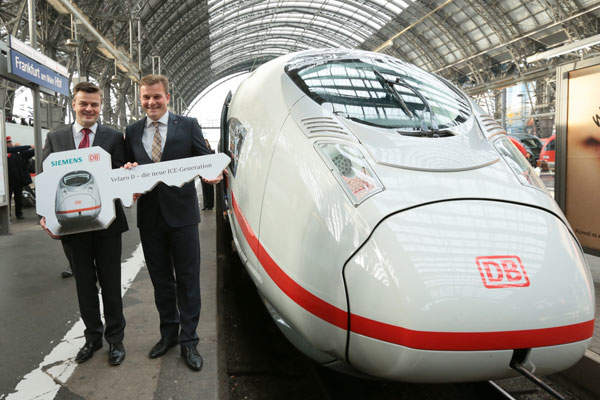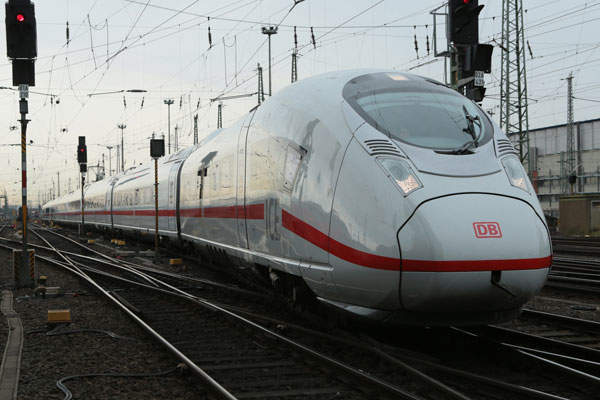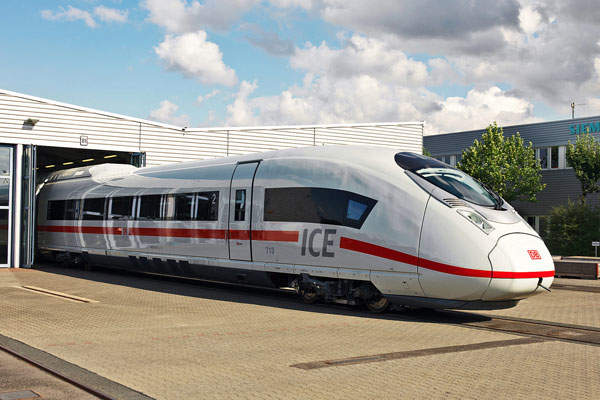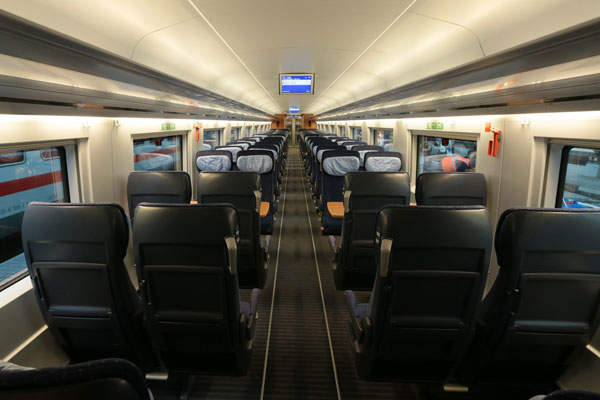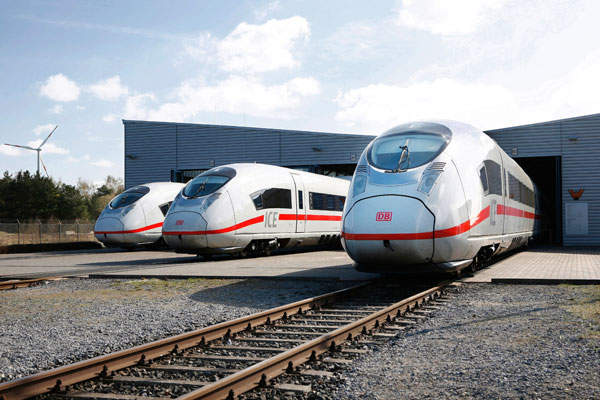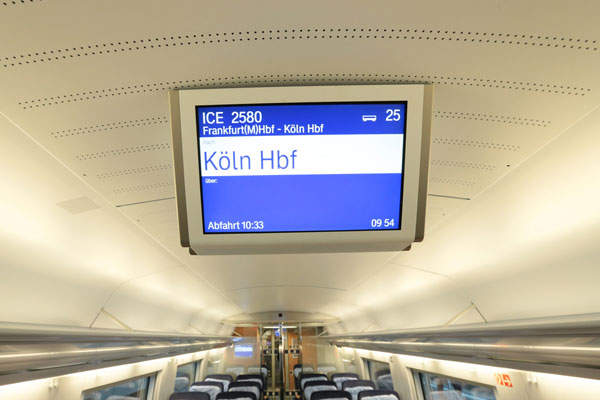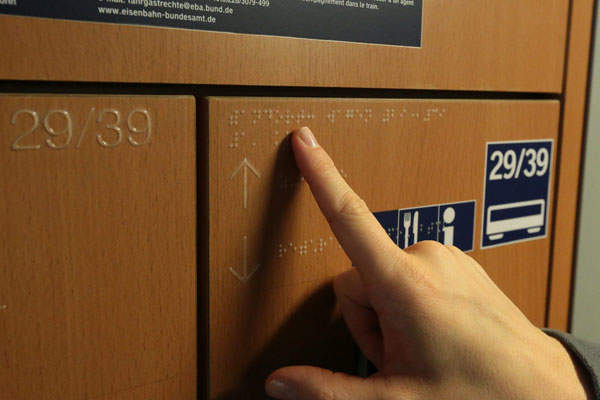
Velaro D is the fourth generation of high-speed trains developed by Siemens, based on the Velaro platform. The trains are being built at Siemens’ Krefeld-Uerdingen factory in Germany and are designed for operations in Europe. Deutsche Bahn (DB) operates the train under the Series 407 ICE 3 designation.
Siemens will deliver 17 trains to Deutsche Bahn, which initially ordered for 15 trains under a contract worth €500m in December 2008 and added two more to the order by May 2011. Federal Railway Authority (EBA) granted approval for the operations of the Velaro D trains in Germany in December 2013.
Four Velaro D trains were delivered to DB by end of December 2013. The trains run on the Cologne-Frankfurt (Main)-Stuttgart line. Additional four trains are scheduled to be delivered by end of March 2014. Siemens and DB will coordinate to test the remaining trains proposed for cross-border operations in Belgium and France after official permission is granted. DB also plans to operate the trains from London to Frankfurt via Brussels and Cologne as well as to Amsterdam via Rotterdam.
Velaro D high-speed train design
The 407 series ICE 4 train measures 200m long and weighs up to 454t. Each car is about 25m long, the body is made of aluminium to reduce weight, and the train has a recycling rate of 98%. The traction power of the train is 8,000kW.
The eight-car trains incorporate advanced technologies in aerodynamic profiling, energy management and noise reduction, and are capable of running at a speed of 320km/h on DB’s rail network.
The front ends and front-to-rear raised roof section of the trains are designed to provide good aerodynamics in addition to safety and comfort for the train drivers. The aerodynamic front-end design prevents ‘tunnel boom effect’, the noises produced due to uneven air pressures when the train enters a tunnel at a high speed.
The traction motors are distributed beneath the length of the trains providing about 20% more space compared to the ICE 1 and ICE 2 trains in which locomotives are located at the front and rear ends of each train.
Velaro D trains feature an environmentally-friendly electric braking system which enables energy to be fed back to the power supply system resulting in 10% lesser energy consumption. Further, high fuel efficiency of the trains helps reduce CO2 emissions equivalent of 14 grams per passenger/kilometre.
Innovative fixture elements ensure that the interiors of the Velaro D are quickly changed. Luggage racks and seating arrangements with tables can be supplemented overnight.
Siemens’ train capacity and facilities
The Velaro D’s eight coaches are far more spacious than its predecessors, the Series 403 and Series 406 ICE 3 trains. The Velaro D can accommodate 444 passengers including 111 in first class and the remaining in second class. A Velaro D train can be coupled to any other ICE 3 trains to form a double unit enhancing the seating capacity to 888 passengers.
The high-speed trains operated by DB are the first of their kind to be fitted with hydraulic lift for wheelchairs on each side of the train. Special facilities such as wide entrances and aisles are provided to ease movement for passengers with reduced mobility.
Video-screens mounted on the ceiling of the Velaro D inform passengers in of the train’s progress through GPS.
The trains incorporate a number of features that are friendly to visually impaired passengers. The seat numbers and car numbers are provided in Braille. Grab poles are provided in longer aisle sections, grab handles behind aisle seats, and stronger visible contrast doors and steps.
Contractors on the Velaro D ICE 3 project
Siemens contracted ABB to supply the traction transformer for the new high-speed trains. ABB has exclusively developed the 5,220kV compact, light and environmental friendly traction transformer for the Velaro D train.
HUBER+SUHNER developed the new inter-vehicle connection concept for the trains. The braking systems are being provided by Knorr-Bremse. The Velaro D’s illuminated luggage carrier flaps and the complete interior lighting system implementing T5 fluorescent technology and LEDs were supplied by SBF Spezialleuchten.
The cables and cable systems for the trains are being supplied by Leoni, while Weidmüller is supplying its WFF-185 rails for connecting the medium110V and 4kV cables within the trains.
The European Rail Traffic Management System (ERTMS) level two equipment for the trains is being supplied by Ansaldo STS, under a contract worth €17m, while the acceleration sensors for the trains are being supplied by ASC.

